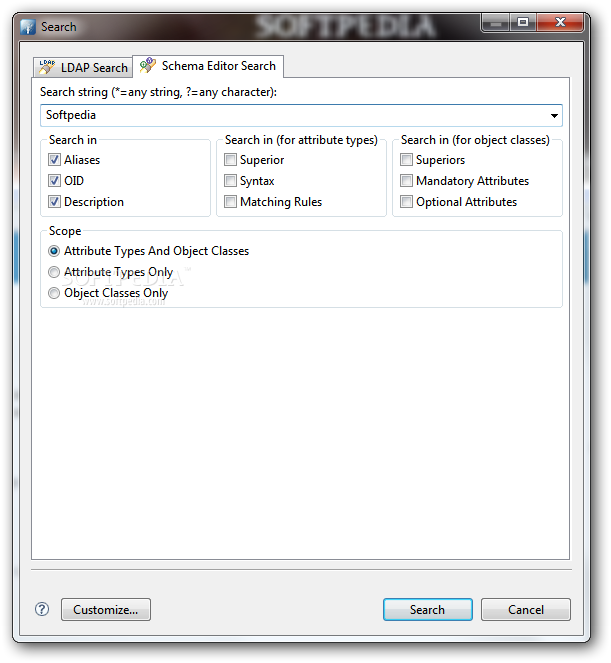


(here, we have modified the LDAPS Port from 10636 to 10637) You just have to send a ModifyRequest using such a LDIF : dn: ads-transportid=ldaps,ou=transports,ads-serverId=ldapServer,ou=servers,ads

In any case, the ou=transports branch contains two entries :įor LDAP : dn: ads-transportid=ldap,ou=transports,ads-serverId=ldapServer,ou=servers,adĪnd for LDAPS : dn: ads-transportid=ldaps,ou=transports,ads-serverId=ldapServer,ou=servers,a The ports are stored in some entries under DN: ldap,ou=transports,ads-serverId=ldapServer,ou=servers,ads-directoryServiceId=default,ou=config (obviously, dependning on your installation, this DN might change : the ads-directoryServiceId may have a different name, so is the ads-serverId). In order to modify the entry containing the ports, you have first to find it, and second to send a valid modify request.Īll the ApacheDS configuration is stored under the ou=config partition.
#APACHE DIRECTORY STUDIO FEDORA UPDATE#
The configuration is stored as a set of LDAP entries, so you can update one of them. You will have to relaunch the server in order to get this new configuration to be available. Modifying the configuration on a running server will **not** change the listening port of the running server. You can update the ports and save the file. Opening this file will open the exact same window : But if you want to configure the server when it’s stopped, you will have to load the configuration file, which is on …/instances/default/conf/config.ldif, when the server has been installed using the default setting. You can start it and update the configuration, of course.
#APACHE DIRECTORY STUDIO FEDORA HOW TO#
This section describes how to configure logging within a standalone ApacheDS. You have to restart the server afterwards in order to take this change into effect. In order to detect and analyze problems, adjusting the log level of a server can be a valuable tool. Now, change the values of port to your needs, then save the configuration. When you select this menu, you will get the main configuration screen, containing the port for LDAP and LDAPS : The best solution is to connect on the server using Studio, and to open it’s configuration : Using Apache Directory Studio The server is started It supports multiple LDAP servers and provides a user-friendly interface for managing directory data. It allows users to browse, search, modify and administer LDAP directories, as well as manage users and groups. We will see how to change the port in those two cases. Apache Directory Studio is a free and open-source software that provides a comprehensive suite of tools for managing LDAP directories. Thus on a Unix-System, a non-root process must listen on a port greater than 1023. Due to traditional Unix security restrictions, ports less than 1024 were "trusted".


 0 kommentar(er)
0 kommentar(er)
